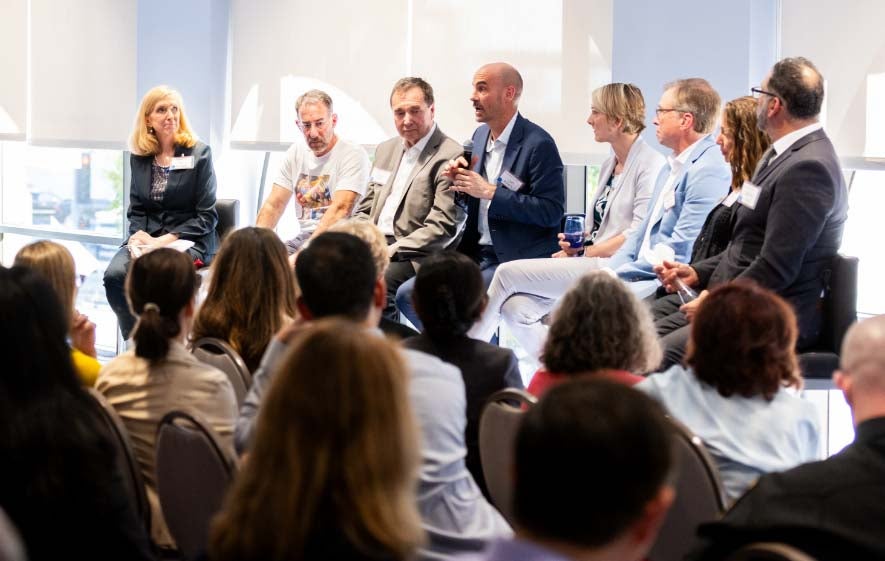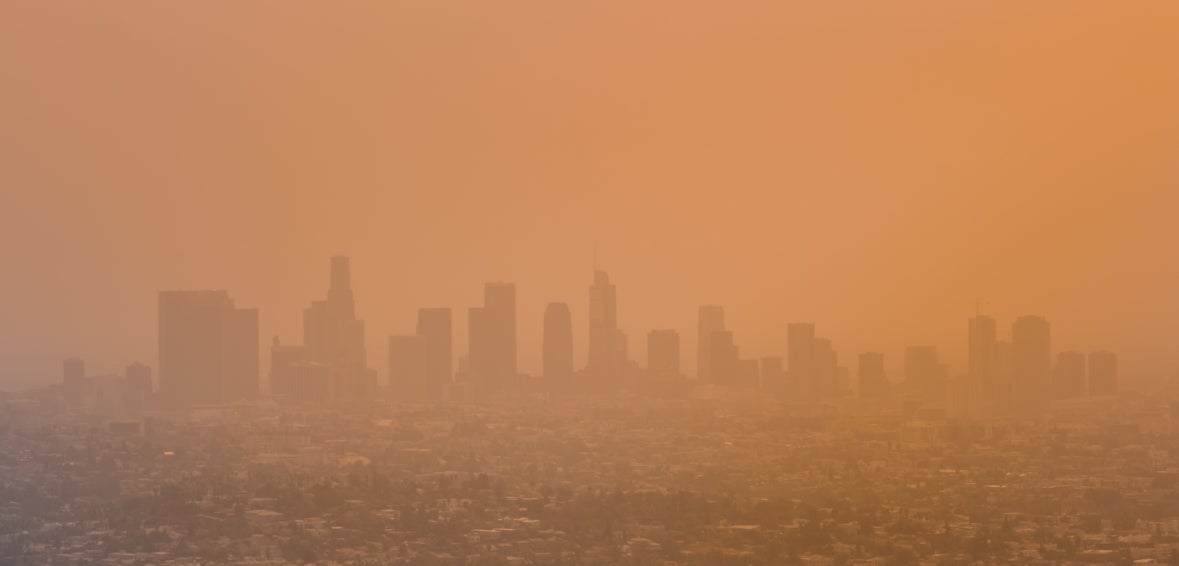In January 2025, the city of Los Angeles was devastated by the Palisades and Eaton wildfires. Spreading rapidly across neighborhoods, the fires killed 29 people, destroyed more than 16,000 homes and buildings, and exposed millions of people to toxic smoke—even those living hundreds of miles away. In the aftermath of the fires, residents and first responders face concerns about the health hazards of their changed environment.
Thanks to a gift from the Spiegel Family Fund, a consortium of researchers from six universities are collaborating to investigate and better understand the short- and long-term effects of wildfires and help reduce the risk of harmful exposures. The Spiegel Family Fund’s gift is also inspiring other donors to support the study.
The Los Angeles Fire Human Exposure and Long-Term Health Study (L.A. Fire HEALTH Study)—led by Harvard T.H. Chan School of Public Health; the Keck School of Medicine of the University of Southern California; Stanford University; the University of California, Los Angeles Fielding School of Public Health; the University of California, Davis; and the University of Texas at Austin—aims to examine what types of pollutants are present in the environment, where they are located, and the quantity that persists over time. Bringing together scientists with expertise in data science, health outcomes, wildfire risk assessment, and environmental exposure assessment, the study is measuring the respiratory, neurological, cardiovascular, reproductive, and immune system effects of wildfires over 10 years.
The L.A. Fire HEALTH Study is unique for many reasons, including its urgency and scope. Because so little is known about wildfire health effects over time—such as the risk of developing chronic conditions like asthma, heart disease, and stroke—the findings will provide much-needed data to help inform decisions about public health and safety.
“This study is the first of its kind to test pollutants in the air, water, and soil not only in the outdoor environment but also in homes and schools,” says study co-leader Kari Nadeau MD ’92, PhD ’95, John Rock Professor of Climate and Population Studies and chair of the Department of Environmental Health at Harvard Chan School, professor of medicine at Harvard Medical School, and practicing physician at Beth Israel Deaconess Medical Center. “We are grateful to the Spiegel Family Fund for this opportunity to help those affected by these fires and learn how to better protect ourselves and our environment from the impacts of future disasters.”
Evan Spiegel, who established the Spiegel Family Fund in 2017, grew up in Pacific Palisades and currently lives in Los Angeles with his family. His strong connection to California spurred him to support the project.

“This study is the first of its kind to test pollutants in the air, water, and soil not only in the outdoor environment but also in homes and schools. We are grateful to the Spiegel Family Fund for this opportunity to help those affected by these fires and learn how to better protect ourselves and our environment from the impacts of future disasters.”
— Kari Nadeau MD ’92, PhD ’95, co-leader of the L.A. Fire HEALTH Study
Spiegel decided to fund the study in the hopes that it could propel local recovery efforts and reveal valuable knowledge that will help people around the world affected by wildfires.
“We are not the first community to face a megafire. We will not be the last,” Spiegel wrote in a letter to the City of Los Angeles after the wildfires. “But we will use our strength, our ingenuity, and our love to create again and anew.”
A Living Laboratory
Moving quickly once the fires were under control, researchers outfitted a van into a mobile collection lab where they could quickly gather and test samples from affected neighborhoods. The team retained samples of ash and other contaminants from the interiors of 50 homes, along with data gathered from air pollution sensors. In addition to showing the effects of the pollutants, the samples will also help researchers examine how building design and air filtration systems handle these contaminants.
“This rapid mobilization of scientists across so many universities, all with a common goal of helping the people of Los Angeles through this crisis, simply would not have been possible without the support from the Spiegel Family Fund,” says Joe Allen, professor of exposure assessment science in the Department of Environmental Health at Harvard Chan School and director of the Harvard Healthy Buildings Program, who is co-leading the consortium’s efforts at measuring contaminants in air, water, soil, dust, and ash.
On its own, wildfire smoke is dangerous due to its chemical makeup and particulate matter. Its composition varies depending on the source of the fire, its intensity, and how it interacts with conditions in the atmosphere. In urban areas like Los Angeles, additional contaminants (such as asbestos and microplastics) from burning cars, buildings, and furniture become suspended in the air and water.
Preliminary findings from the L.A. Fire HEALTH Study are already leading to interventions. Initial results indicated that firefighters involved in the Palisades and Eaton fires exhibited higher concentrations of lead and mercury in their blood cells compared to those who had battled earlier forest fires in less densely populated regions. Prior to this study, scientists only looked for the presence of harmful chemicals in the air, not inside human cells. With this new information, doctors from Cedars-Sinai Medical Center were able to treat the firefighters for this exposure sooner—and it could help medical professionals in Los Angeles and elsewhere diagnose and treat more people earlier following future fires.
In addition, the study has been able to rapidly disseminate test results from air and water and provide actionable steps people can take to stay safe—including releasing data briefs and guides, such as how to reduce risk of wildfire smoke at home, and leading town halls across Los Angeles.
By monitoring health outcomes over time, researchers hope to equip everyone affected by wildfires—residents, first responders, fellow scientists, and nonprofits providing disaster relief—with the tools they need. “One of our biggest priorities is to provide communities with information based on sound scientific evidence so that they can make the best decisions possible,” says Nadeau.

